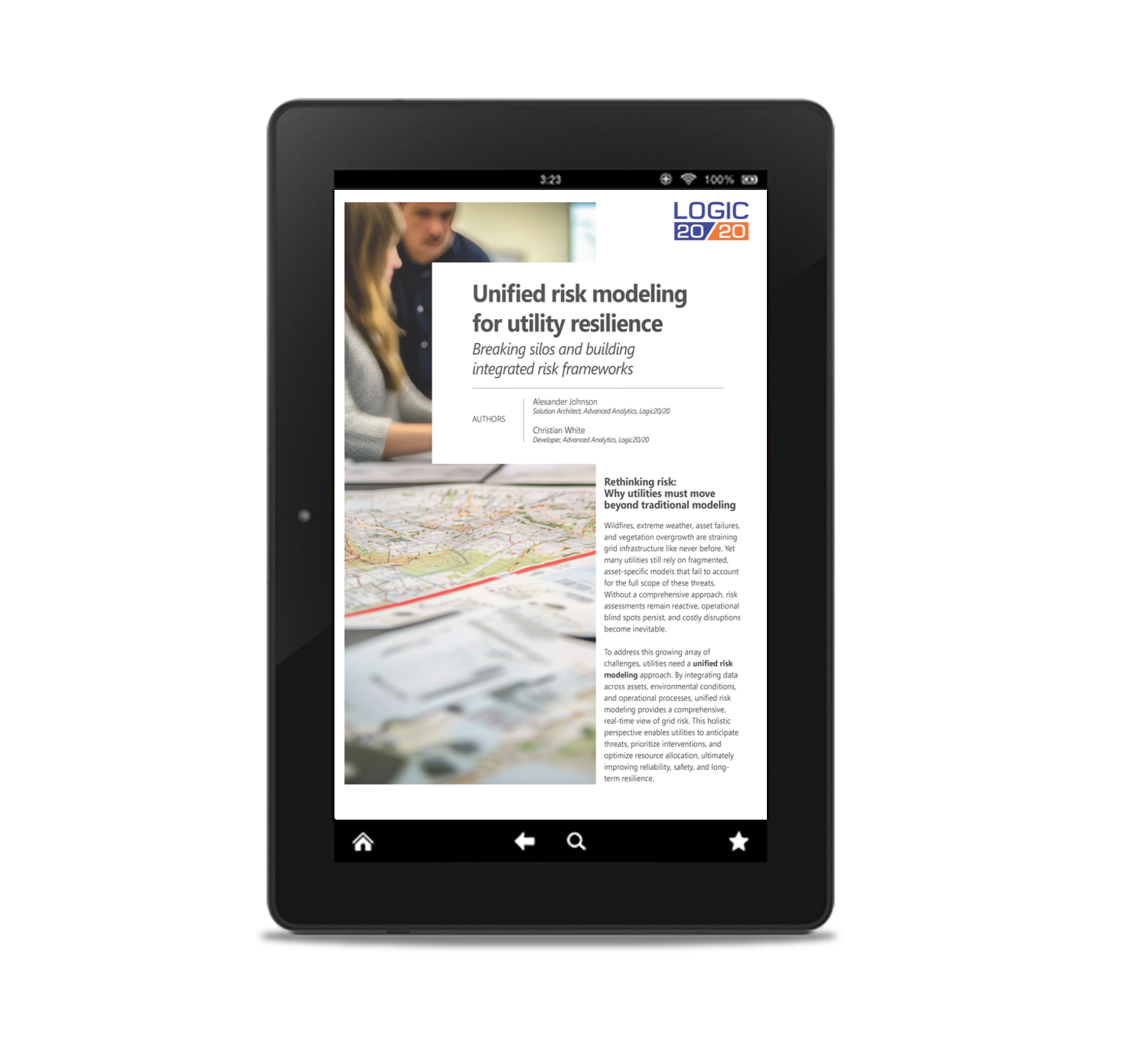How unified risk modeling is transforming utility resilience
Wildfires, extreme weather, and aging infrastructure are straining utility grids like never before. Yet many utilities still rely on fragmented, asset-specific models that fail to account for the full scope of these risks. Without a unified approach, risk assessments remain reactive, operational blind spots persist, and costly disruptions become inevitable.
A unified risk modeling approach integrates data across assets, environmental conditions, and operational processes to provide a real-time, comprehensive view of grid risk. This holistic perspective enables utilities to prioritize interventions, optimize resource allocation, and enhance grid reliability and safety.
Download the white paper to explore how unified risk modeling can transform your approach to utility resilience.
Key takeaways
How siloed processes and inconsistent risk definitions create operational blind spots
The case for a unified approach
How integrating risk data improves situational awareness and predictive capabilities
Key use cases
Practical applications for wildfire mitigation, vegetation management, and long-term infrastructure planning
Proven implementation strategies
Steps for breaking down silos, aligning risk definitions, and integrating insights into decision-making
Grab your copy of Unified risk modeling for utility resilience:

A glimpse into Unified risk modeling for utility resilience
Balancing short- and long-term risk prediction
A key advantage of unified risk modeling is its ability to provide both immediate situational awareness and long-term strategic foresight. By integrating real-time and historical data, utilities can shift from reactive responses to proactive risk mitigation across multiple time horizons.
Short-term risk forecasting supports operational decision-making. Immediate risks—such as tree falls during storms or high-wind events—require fast, data-driven decision-making. Unified risk models incorporate real-time weather data, asset health metrics, and environmental conditions to predict these threats before they escalate. These insights help utilities allocate crews efficiently, minimize service disruptions, and improve safety during extreme weather events.
Long-term hazard modeling strengthens strategic planning. Some risks develop gradually, making them harder to detect with traditional, short-term monitoring approaches. By analyzing factors such as vegetation growth rates, climate trends, and historical performance data, utilities can anticipate long-term hazards—such as increased wildfire exposure or accelerated infrastructure wear—and plan mitigation strategies accordingly. Insights from long-term modeling drive investment decisions, optimize maintenance schedules, and strengthen grid resilience over time.
Ready for more?
Download your copy of Unified risk modeling for utility resilience today.


Christian White is a Developer in Logic20/20’s Advanced Analytics practice, specializing in environmental data science and risk modeling for utilities. With a background in wildfire mitigation, geospatial analysis, and predictive modeling, she helps utilities integrate real-time data to enhance resilience and operational decision-making. Her expertise in machine learning and climate risk assessment enables organizations to proactively identify and mitigate infrastructure vulnerabilities. Prior to Logic20/20, Christian worked with NASA, developing predictive models for climate change and weather forecasting.

